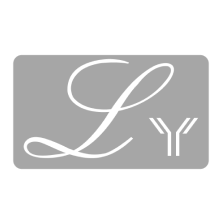Anti-Human Activin RIA
- -
- -
Antibody DetailsProduct DetailsReactive Species Human Host Species Goat Immunogen Sf 21-Derived Recombinant Human Activin RIA Extracellular Domain Endotoxin Level <0.1 EU/µg as determined by the LAL method Formulation This antigen affinity purified polyclonal antibody has been 0.2 µm filtered and lyophilized from modified Dulbecco’s phosphate buffered saline (1X PBS) pH 7.2 – 7.3 containing 5.0% w/v trehalose with no calcium, magnesium, or preservatives present. State of Matter Lyophilized Storage and Handling The lyophilized antigen affinity purified polyclonal antibody can be stored desiccated at -20°C to -70°C for twelve months from date of receipt. The reconstituted antibody can be stored for at least four weeks at 2-8°C. For long-term storage of the reconstituted antibody, aseptically aliquot into working volumes and store at -20°C to -70°C in a manual defrost freezer. Avoid Repeated Freeze Thaw Cycles. No detectable loss of activity was observed after six months. Country of Origin USA Shipping Next Day Ambient RRIDAB_2828135 Applications and Recommended Usage? Quality Tested by Leinco Flow Cytometry: It is recommended to use the indirect method for signal enhancement when enumerating cells expressing Activin RIA. A suggested method would be to stain cells expressing Activin RIA with 2.5 µg/106 cells in a total staining volume of ≤200 µl followed by PN:G641. Western Blotting: To detect Human Activin RIA this polyclonal antibody can be used at a concentration of 0.1 - 0.2 µg/ml. This polyclonal antibody should be used in conjunction with compatible second-step reagents such as PN:G505 and a chromogenic substrate such as PN:T343. The detection limit for Human Activin RIA is 1 ng/lane under either reducing or non-reducing conditions. The sensitivity of detection may increase up to 50 fold when a chemiluminescent substrate is used. Additional Applications Reported In Literature ? IHC (NBF/Par.): This antibody should give satisfactory staining results when used at a concentration of 10 µg/ml. The recommended secondary antibody for IHC is PN:G505. For chromogenic detection with high signal and low background use PN:D100 or PN:K107. CyTOF-ready: Ready to be labeled using established conjugation methods. No BSA or other carrier proteins that could interfere with conjugation. Each investigator should determine their own optimal working dilution for specific applications. See directions on lot specific datasheets, as information may periodically change. DescriptionDescriptionSpecificity Goat Anti-Human Activin RIA recognizes Human Activin RIA. This antigen affinity purified polyclonal antibody was purified using a proprietary chromatographic technique that includes covalently immobilizing the antigen proteins or peptides to agarose based beads. This purification method enhances specificity, reduces nonspecific binding of extraneous IgG and provides you with the most reliable reagent available for your early discovery research. Background The Activin type I receptors transduce signals for a variety of members of the Transforming growth factor beta superfamily of ligands. This family of cytokines and hormones include activin, Anti-müllerian hormone (AMH), bone morphogenetic proteins (BMPs), and Nodal. They are involved in a host of physiological processes including, growth, cell differentiation, homeostasis, osteogenesis, apoptosis and many other functions. There are three type I Activin receptors: ACVR1, ACVR1B, and ACVR1C. Each bind to a specific type II receptor-ligand complex.
Despite the large amount of processes that these ligands regulate, they all operate through essentially the same pathway: A ligand binds to a Type two receptor, which recruits and trans-phosphorylate a type I receptor. The type I receptor recruits a receptor regulated SMAD (R-SMAD) which it phosphorylates. The RSMAD then translocates to the nucleus where it functions as a transcription factor. Activin isoforms and other members of the TGF-β superfamily exert their biological effects by binding to heteromeric complexes of a type I and a type II serine-threonine kinase receptor, both of which are essential for signal transduction. To date, seven type I and
five type II receptors, including the two type I and the two type II activin receptors, designated ActR-I(A), ActR-IB, ActR-II(A) and ActR-IIB, have been cloned from mammals. Through alternative mRNA splicing, multiple ActR-IIB isoforms can also be generated, adding to the complexity of the activin receptor system. Different activin isoforms bind with different high-affinities to the various type II isoforms. Type I activin receptors do not bind directly to activin but will associate with the type II receptor-activin complex and
initiate signal transduction. Besides the activin isoforms, ActR-II will also bind inhibin, BMP-2 and BMP-7 with lower affinities. ActR-I can also bind and form signaling complexes with the BMP-2/7-bound BMPR-II. Activin type I receptors are highly conserved. Human, mouse and bovine type IA activin receptors share greater than 98% amino acid sequence homology. Recombinant soluble activin type I receptor does not bind activin. PubMed NCBI Gene Bank ID UniProt.org References & CitationsTechnical ProtocolsCertificate of Analysis |


